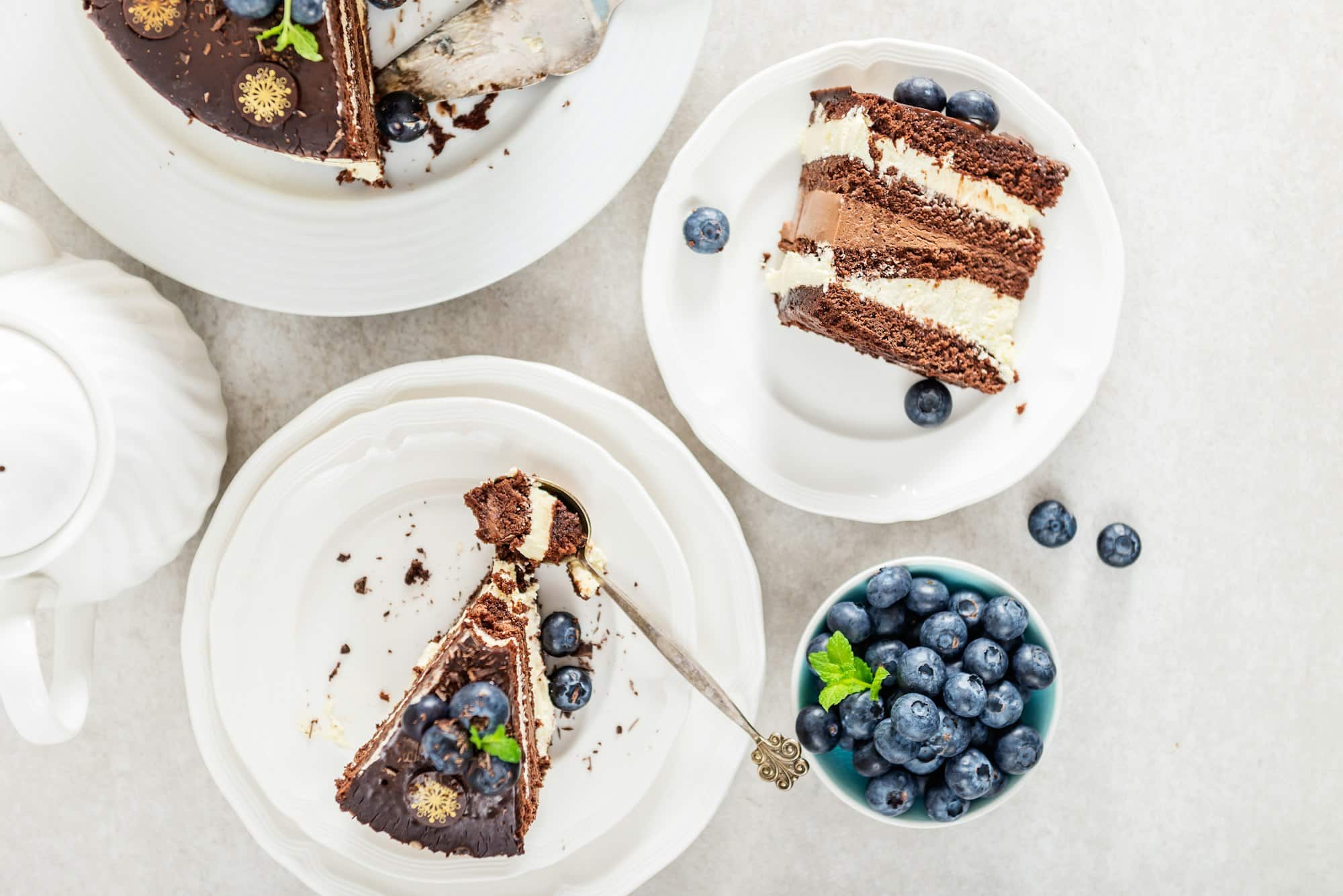How to Create a Decadent French Opera Cake Layer by Layer?

Creating a French Opera cake can seem daunting. With its multiple layers of coffee-soaked sponge, rich chocolate ganache, and silky buttercream, this classic French pastry is a marvel of balance and precision. Yet, by breaking down the process into individual, manageable steps, you can create this exquisite dessert in your own kitchen. We’ll guide you through every stage of the recipe, clarifying the process and providing expert tips to ensure your success.
Gathering Your Ingredients
Before you start, it’s crucial to gather all the ingredients you’ll need. When creating complex pastries like the Opera cake, you don’t want to scramble for a missing ingredient halfway through the process.
Avez-vous vu cela : How to Achieve a Silky-Smooth Italian Gelato with a Custard Base?
The primary ingredients include butter, sugar, eggs, and flour for the sponge cake, along with instant coffee and hot water to create the coffee syrup. For the buttercream, you’ll need additional butter and sugar, eggs, and instant coffee. The chocolate ganache requires semi-sweet chocolate and heavy cream.
Keep in mind that the quality of your ingredients will have a direct impact on the final result. High-quality butter, chocolate, and coffee can elevate your cake from good to exceptional.
A lire en complément : What’s the Secret Behind a Perfectly Balanced Thai Papaya Salad (Som Tam)?
Preparing the Sponge Cake
The Opera cake begins with a thin, light sponge cake soaked in coffee syrup. Start by preheating your oven to 425 degrees F (220 degrees C). Then, in a large bowl, beat the egg whites and sugar until they form stiff peaks. In another bowl, combine the egg yolks, sugar, and flour, then fold this mixture into the egg whites.
Divide the batter into three equal parts and spread each onto a parchment-lined baking sheet. Bake each layer for about 6-8 minutes, until lightly golden. Allow the layers to cool completely before soaking them in the coffee syrup.
Creating the Coffee Syrup and Buttercream
The coffee syrup and the buttercream are the soul of the Opera cake, soaking into the sponge layers and creating a seamless blend of flavors.
To make the syrup, dissolve the instant coffee in hot water and combine it with sugar in a saucepan. Simmer until the sugar is completely dissolved, then set aside to cool.
For the buttercream, beat the butter until it’s creamy and light. In a separate bowl, beat the egg yolks until they’re pale and thick. Gradually add sugar and instant coffee to the yolks, then combine this mixture with the beaten butter.
Assembling the Opera Cake
Once all components are ready, you can start assembling your Opera cake. Begin with a layer of sponge cake, soaking it generously with the coffee syrup. Spread a thin layer of buttercream on top, then add a layer of ganache. Repeat this process until all layers are stacked.
Remember, the key to a good Opera cake is balance – each layer should be thin and evenly spread, so no single flavor overwhelms the others.
Final Touches and Presentation
Once your cake is assembled, spread a final layer of ganache over the top. Some bakers like to add a touch of gold leaf or a dusting of cocoa powder for extra flair, but this is entirely optional.
Allow your Opera cake to set in the refrigerator for at least a couple of hours, or ideally overnight. This will help the flavors meld together and make the cake easier to slice.
When you’re ready to serve, slice the cake into squares or rectangles. The side view of the individual slices, with their alternating layers of sponge, buttercream, and ganache, is truly a sight to behold – a testament to your skill and the enduring appeal of this classic French dessert.
So, the next time you’re feeling adventurous in the kitchen, why not tackle the Opera cake? It’s a baking challenge worth undertaking, and the reward is a dessert that’s as delightful to look at as it is to eat.
Mistakes to Avoid and Useful Tips
While creating an Opera cake can be exciting, it’s easy to make a few missteps along the way. Learning from these common mistakes can help you to perfect your cake recipe.
Over-soaking the sponge: The sponge cake should be moist but not soggy. Over-soaking can lead to a mushy texture and may cause your cake layers to fall apart. Remember, the coffee syrup is meant to infuse the cake with flavor, not to drench it.
Rushing the process: Good things take time, and this applies to Opera cake as well. Allow each cake layer to cool entirely before applying the coffee syrup and the buttercream. This will prevent them from becoming too soft or melting.
Not measuring ingredients accurately: Pastry making is an exact science, so measure your ingredients accurately. This is particularly crucial for ingredients like sugar and flour, which can drastically alter the cake’s texture if used in incorrect proportions.
Use of low-quality ingredients: As mentioned earlier, the quality of your ingredients can significantly impact the final result. Always use high-quality chocolate, butter, and coffee.
Not allowing the cake to set: It’s tempting to cut into your beautiful creation as soon as it’s assembled, but patience is key. Letting the cake set in the refrigerator will allow the flavors to meld together and the cake to firm up, making it easier to cut.
Conclusion: Embrace the Challenge of the Opera Cake
Creating an Opera cake is not a simple process. It demands patience, precision, and a willingness to engage with the meticulous art of French pastry making. But the reward of this intense labor of love is a decadently layered dessert that’s a feast for the senses.
Each slice of Opera cake unveils a symphony of flavors: the light, delicate sponge cake with hints of almond flour, the dark, rich chocolate ganache, the creamy, aromatic coffee buttercream, all brought together by the subtle sweetness of coffee syrup. Every layer plays a crucial role in an Opera cake, and the final result is truly greater than the sum of its parts.
Whether you’re a novice baker or experienced patissier, the Opera cake is a delightful challenge to undertake. It teaches you the value of precision, the importance of balance, and the joy of creating something truly beautiful and delicious from simple ingredients. So, don your apron, gather your ingredients, and embrace the challenge of creating your own Opera cake. After all, as the saying goes, the proof of the pudding is in the eating!
Remember, the journey of creating an Opera cake, from the first whisk of egg whites to the final dusting of powdered sugar, is as rewarding as savoring the finished product. Don’t be discouraged if your first attempt doesn’t look like a master patissier’s creation. Practice makes perfect, and each attempt brings you one step closer to creating the perfect Opera cake. Enjoy the process, learn from your mistakes, and most importantly, have fun in the kitchen!
